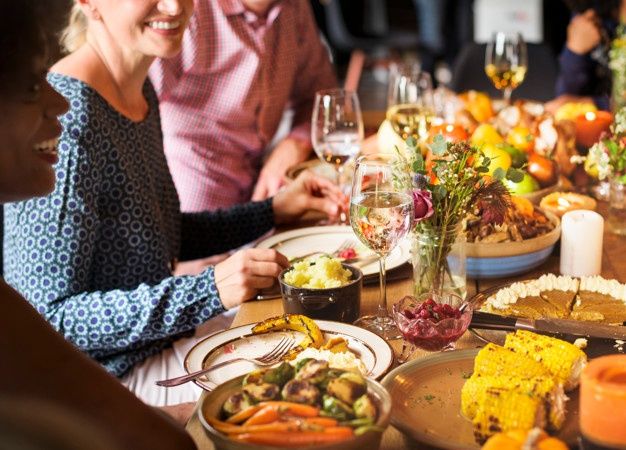
Holiday Safety Measures and COVID-19
Now that COVID-19 vaccines are available for adults and children five years of age and older, families and individuals are thinking more about upcoming holiday gatherings. Although over 78 percent of the U.S. population has received at least one vaccine dose, families and friends should still exercise caution if celebrating in close contact.
COVID-19 cases, hospitalizations, and deaths continue to drop, but the possibility of viral transfer is still a reality, with most states currently experiencing high levels of community-wide spread. You can still do several things to preserve safety, reduce the risk of transmission, and enjoy plenty of holiday cheer.
Vaccinations
The Centers for Disease Control and Prevention (CDC) recommends vaccination against COVID-19. With the eligible population now including children at least five years of age, it has become easier than ever to protect your loved ones. Unfortunately, not everyone can get the shot for medical reasons, which means reasonable precautions before, during, and after the holidays are always a good idea.
Social Distancing in Public
As you go about your shopping, try to avoid crowded areas with poor air circulation. It is best to shop alone and visit stores during low-traffic times. In addition, attending crowded spectator events makes social distancing virtually impossible.
Gatherings
Many people are understandably ready to see friends and family in person again. Nevertheless, the larger the get-together equals more individuals present, and the closer they’ll be together physically, which means the greater the chance of COVID transmission. This is still the case if no one shows symptoms of the virus.
Whether you host or attend a gathering, some planning and communication can go far in ensuring everyone stays healthy. If you are hosting, talk with members of your household about COVID precautions and how you’ll communicate safety-related expectations to guests.
When you’re still in the planning stages, consider these steps:
- Ask people who are symptomatic or have tested positive for COVID-19 to stay home and virtually participate.
- If possible, allow for physical distance when making seating arrangements. Consider placing people from one household at the same table.
- Have hand sanitizer or wipes available.
- If the weather is good, have the gathering outside. Otherwise, keep windows and doors open to circulate air.
- Limit guests to a small number.
- Make sure you can quickly contact guests if there has been known exposure to COVID-19 among any guests.
- Plan for a shorter party to limit guests’ contact with others.
Finally, communicate your expectations with guests well in advance. Be tactful if you make safety-related requests. Also, suggest that invitees avoid as many people as possible outside their household for 14 days before the event.
When preparing and serving meals, limit the number of people in the kitchen and doing the cooking. Anyone directly involved with food prep should wear a mask and try to limit the number of dishes brought by guests. If you decide to provide all the food, serve everyone instead of letting people help themselves.
If you are going to someone else’s house, bring hand sanitizer and try to use it discreetly. Also, avoid using alcohol or limit your consumption because it could impair your judgment. Being intoxicated increases your likelihood of engaging in riskier activities, allowing for greater exposure to COVID-19.
It also might be good to limit hugs and handshakes or limit physical proximity to members of your household. Finally, do your host a favor—take a COVID-19 test and confirm a negative result before arrival.
What About Masking?
You will likely be hard-pressed to find anyone who does not have mask fatigue at this stage of the pandemic. Even as COVID vaccinations have reduced transmissions and hospitalizations, the CDC provides updated recommendations for masking. They suggest employing the following safety measures:
- If you haven’t received the COVID-19 vaccine yet, strongly consider wearing a mask indoors or when in close contact with others outside.
- Wear a mask when preparing or serving food.
- Do not put a mask on children under two years of age.
- Consider wearing a mask if you are in a geographic area with high transmission rates, including for outdoor gatherings if you are in close contact with others.
- Even if you are fully vaccinated, think about masking up if you have a weakened immune system.
This holiday season will not likely be back to “normal” yet, and it’s still a good idea to take precautions. However, you can safely celebrate and create memories with those you love with a few simple precautions.
Research and materials for this article were compiled, written, and distributed on behalf of the National Public Health Information Coalition. The views and opinions expressed in this blog are those of the various authors and do not necessarily reflect the official policy or position of the National Public Health Information Coalition or its members.
References

